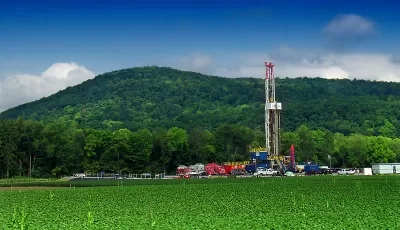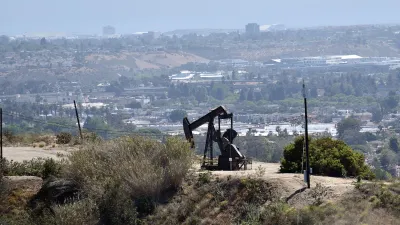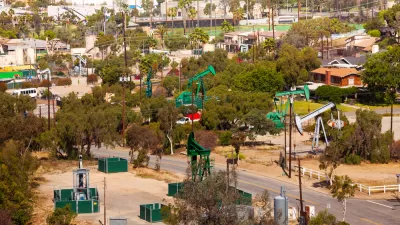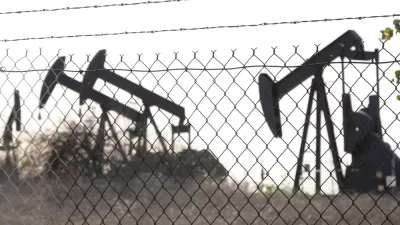Hundreds of thousands of defunct oil wells litter the state, leaking dangerous substances and often hidden under parking lots, buildings, or covered over by vegetation.

Pennsylvania is expecting to receive $400 million in federal funding aimed at plugging the state’s roughly 250,000 defunct oil wells, which can pose serious health risks to surrounding communities. Writing for Inside Climate News, Stacey Burling describes the state of the state’s hundreds of thousands of abandoned wells.
Abandoned wells can contaminate surrounding groundwater and soil with carcinogens and release harmful gases into the air. “One of the known risks of abandoned wells, many of which were drilled before there were good regulations or records, is that fracking fluid can find an underground path to them and then spew to the surface. The wells, which often just look like pipes sticking from the ground, also can release methane, a potent greenhouse gas, and other chemicals that can be harmful to people, plants, and wildlife.”
With many of the state’s wells “drilled in remote locations in an era when no one was required to report where they were,” the state has essentially lost track of thousands of abandoned wells. “More dangerously, some are now under parking lots or buildings. Some may just look like small depressions in the ground.” For many of them, “government is the only hope for plugging the oldest wells, because the original drillers are long gone, or more recent owners have gone bankrupt.”
FULL STORY: Pennsylvania Expects $400 Million in Infrastructure Funds to Begin Plugging Thousands of Abandoned Oil Wells

Planetizen Federal Action Tracker
A weekly monitor of how Trump’s orders and actions are impacting planners and planning in America.

Restaurant Patios Were a Pandemic Win — Why Were They so Hard to Keep?
Social distancing requirements and changes in travel patterns prompted cities to pilot new uses for street and sidewalk space. Then it got complicated.

Map: Where Senate Republicans Want to Sell Your Public Lands
For public land advocates, the Senate Republicans’ proposal to sell millions of acres of public land in the West is “the biggest fight of their careers.”

Maui's Vacation Rental Debate Turns Ugly
Verbal attacks, misinformation campaigns and fistfights plague a high-stakes debate to convert thousands of vacation rentals into long-term housing.

San Francisco Suspends Traffic Calming Amidst Record Deaths
Citing “a challenging fiscal landscape,” the city will cease the program on the heels of 42 traffic deaths, including 24 pedestrians.

California Homeless Arrests, Citations Spike After Ruling
An investigation reveals that anti-homeless actions increased up to 500% after Grants Pass v. Johnson — even in cities claiming no policy change.
Urban Design for Planners 1: Software Tools
This six-course series explores essential urban design concepts using open source software and equips planners with the tools they need to participate fully in the urban design process.
Planning for Universal Design
Learn the tools for implementing Universal Design in planning regulations.
Heyer Gruel & Associates PA
JM Goldson LLC
Custer County Colorado
City of Camden Redevelopment Agency
City of Astoria
Transportation Research & Education Center (TREC) at Portland State University
Camden Redevelopment Agency
City of Claremont
Municipality of Princeton (NJ)





























